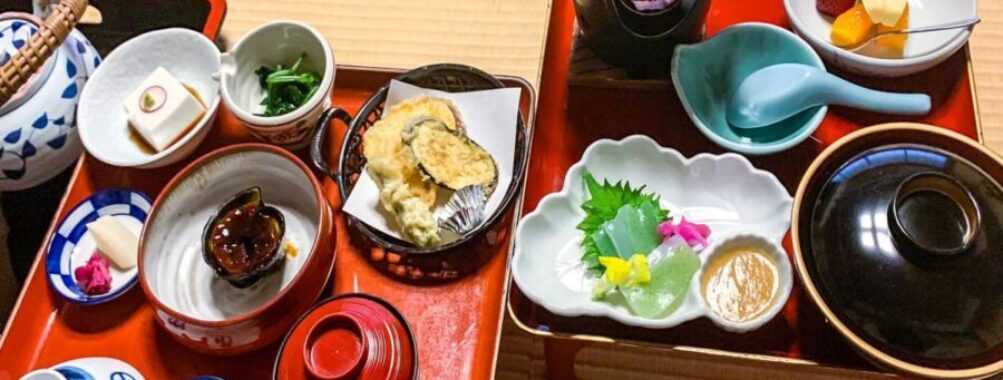
How to Find Vegetarian Food in Japan: 7 Insider Tips for Eating Well Anywhere
Thinking about traveling to Japan as a vegetarian? I still remember my first trip—hungry, a bit overwhelmed, and side-eyeing every sushi counter I walked past. You’ll absolutely eat well as a vegetarian in Japan if you come prepared and stay a little curious. From tucked-away vegan cafés in Tokyo to classic temple meals in Kyoto, there’s a surprising amount to discover—if you know where to poke around.
Always check if dishes like miso soup or veggie curry sneak in fish products (dashi hides everywhere, trust me). I leaned on local supermarkets and those ever-reliable konbini stores when I needed a quick fix. Don’t hesitate to ask staff for help—most want to help, even if it takes a few gestures. If you’re hauling luggage as you hunt for vegan snacks, stash your bags in luggage storage near train stations and roam hands-free.
Table of Contents
- Key Takeaways
- Understanding Japanese Cuisine for Vegetarians
- Typical Ingredients and Hidden Animal Products
- Common Vegetarian Dishes
- Shojin Ryori and Buddhist Cuisine
- Where to Find Vegetarian Food in Japan
- Vegetarian and Plant-Based Restaurants
- Navigating Convenience Stores and Supermarkets
- Essential Tips for Vegetarians Traveling in Japan
- Communicating Dietary Requirements
- Using Technology to Find Options
- Regional Vegetarian Experiences Across Japan
- Vegetarian Food in Kyoto
- Vegetarian Spots in Tokyo
- Osaka’s Vegetarian Scene
- Navigating Traditional and Popular Japanese Foods
- Identifying Vegetarian Sushi and Rice Dishes
- Noodles, Curries, and Soups
- Snacks, Street Food, and Dessert
- Local Products and Shopping Advice
- Reading Labels and Finding Vegetarian Groceries
- Plant-Based Cooking Classes and Food Tours
- Frequently Asked Questions
- What are the best strategies for locating vegetarian restaurants in Japan?
- Can you find vegetarian options at convenience stores like 7-Eleven in Japan?
- What are some popular vegetarian dishes in Japanese cuisine?
- How do you effectively communicate dietary restrictions as a vegetarian in Japan?
- Which cities in Japan are most accommodating to vegetarians?
- Are there any specific Indian vegetarian dishes widely available in Japan?
- Book Your Dream Experience
- More Travel Guides
Key Takeaways
- Smart planning and a little research make vegetarian food in Japan much easier
- Knowing the basics of Japanese food helps you steer clear of fishy surprises
- Local haunts and clever travel hacks keep your meals interesting
Understanding Japanese Cuisine for Vegetarians
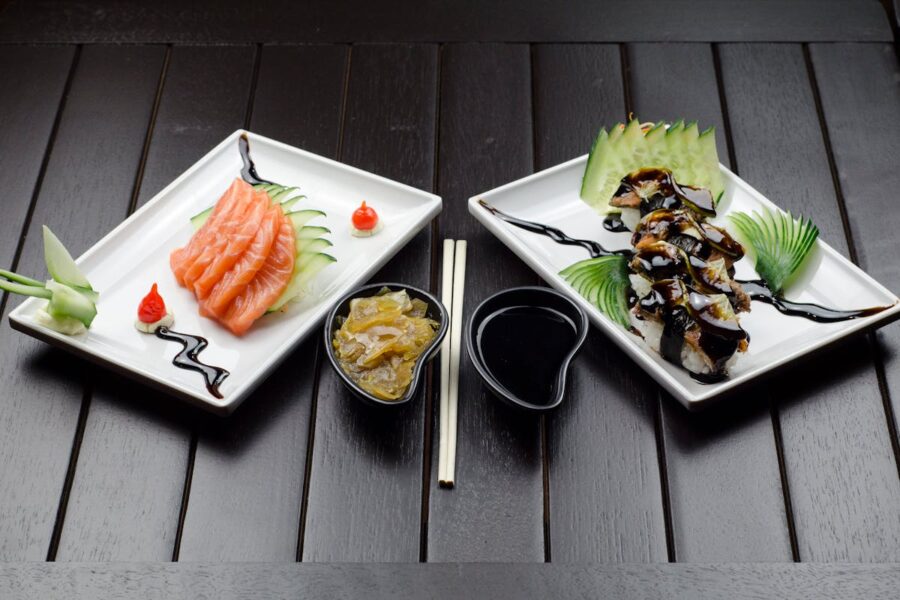
Hunting down vegetarian food in Japan isn’t as simple as you’d hope—animal products sneak into places you wouldn’t expect. If you know what to watch for and which dishes are usually safe, you’ll stress less and enjoy more.
Typical Ingredients and Hidden Animal Products
Japanese cuisine loves seasonal veggies and staples like tofu and seaweed. But here’s the catch: animal-based ingredients often lurk in soups, seasonings, and sauces.
Dashi is the main culprit. It’s the backbone of so many soups, and most versions use katsuobushi—that’s dried bonito (fish) flakes. Even miso soup isn’t always a safe bet. Watch out for things like gelatin, chicken or pork broths, and fish sauce sneaking in elsewhere.
Here’s a quick cheat sheet:
| Ingredient | Vegetarian? | Notes |
|---|---|---|
| Tofu | Yes | Sometimes cooked in animal broth—just ask. |
| Kombu (seaweed) | Yes | Used for vegetarian dashi. |
| Katsuobushi | No | Dried fish flakes—common in broths. |
| Soba noodles | Sometimes | Dipping soup might use fish stock. |
Ask restaurant staff what’s in your food. In cities, you’ll sometimes get an English menu or someone willing to help, but in rural areas, it’s a bit more of a guessing game.
Common Vegetarian Dishes
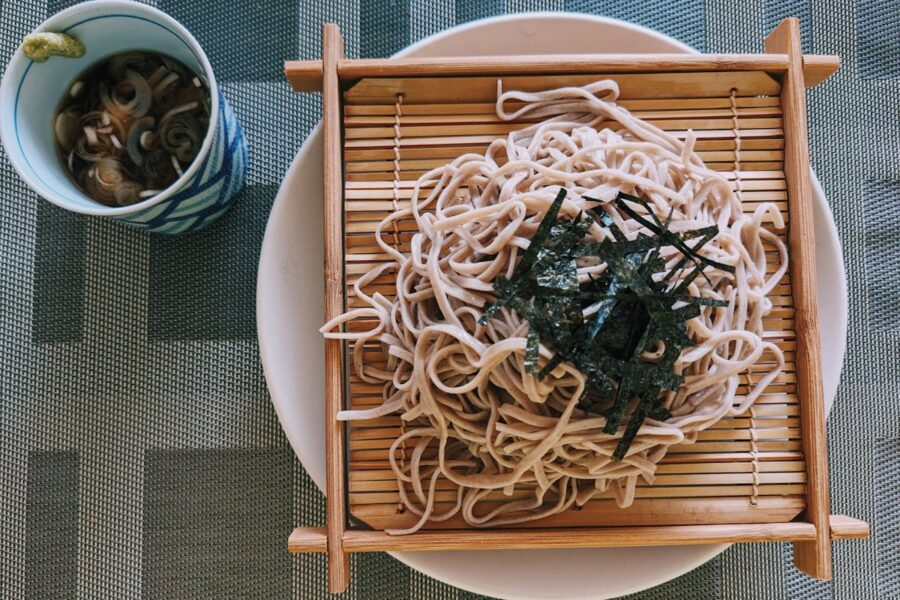
You’ll find some solid vegetarian Japanese dishes if you know where to look. Vegetable tempura—crispy fried sweet potato or eggplant—is a safe bet. Zaru soba (cold buckwheat noodles) can be vegetarian if you ask for kombu-based dipping sauce instead of the usual fishy one.
If you’re a tofu fan, try yudofu (tofu hot pot) or agedashi tofu (crispy tofu in broth—double-check the broth, though). Don’t skip onigiri (rice balls) with umeboshi plum, edamame, veggie sushi like kappa maki (cucumber), or takuan maki (pickled radish). Other standouts: nasu dengaku (miso-glazed eggplant), mochi rice cakes, and the occasional vegetarian or vegan ramen (just ask about the broth).
If you’re city hopping, search for accommodation that’s near vegetarian-friendly spots or offers veggie meals—makes life much easier.
Shojin Ryori and Buddhist Cuisine
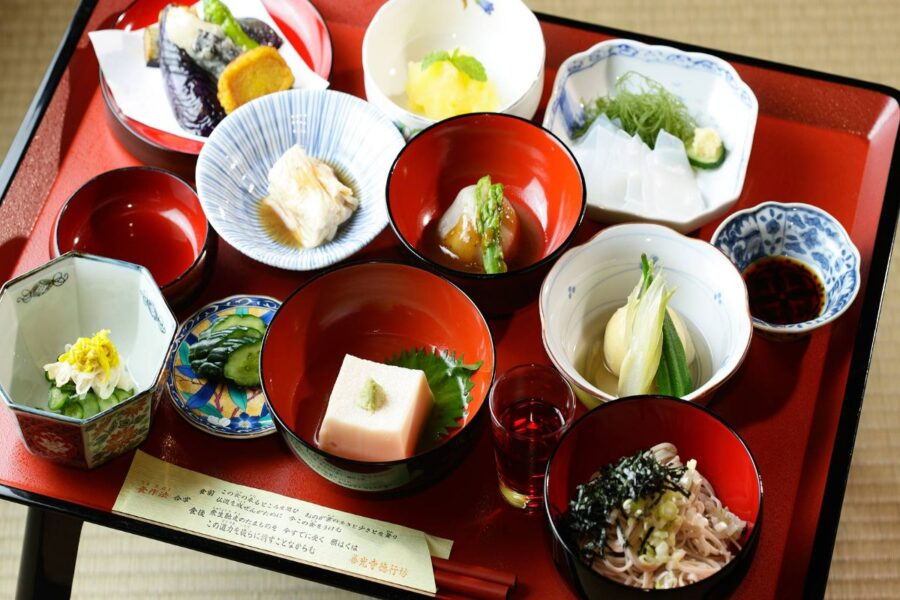
If you want a meal that’s 100% plant-based, shojin ryori is your best friend. Buddhist monks developed this cuisine, and it’s strictly vegetarian—no fish, meat, or eggs. Expect tofu, seasonal veggies, seaweed, and wild mountain greens.
Temple lodgings in places like Kyoto, Kamakura, or Mount Koya serve these beautiful multi-course meals. There’s something special about a tray of shojin ryori: tiny artful plates, miso soup with kombu dashi, and delicate sesame tofu. It’s not just a meal—it’s a slice of Japanese history.
If you’ve only eaten plant-based food at home, you’ll find Japanese temple cuisine refreshingly different. Don’t expect big flavors—shojin ryori is all about subtlety and connecting with the seasons.
Where to Find Vegetarian Food in Japan
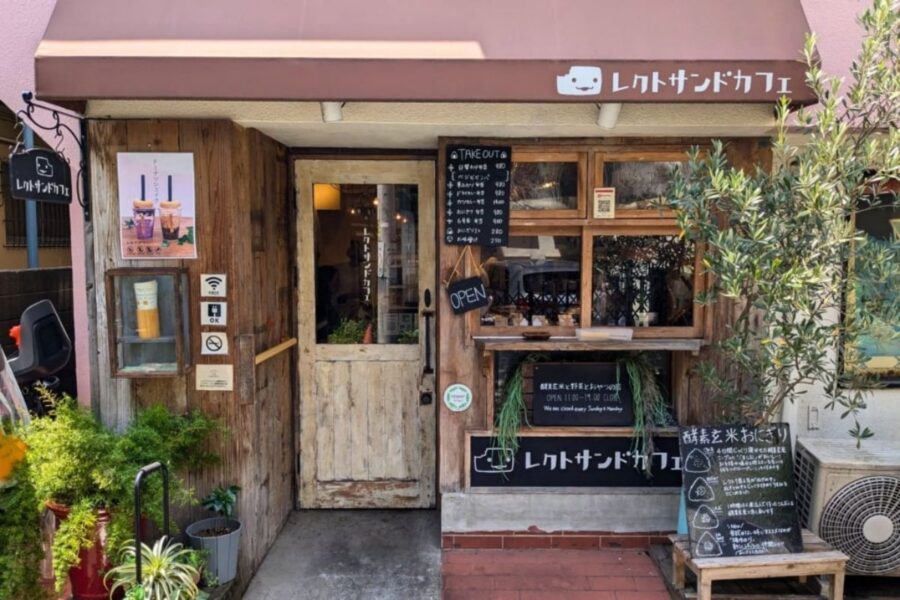
Finding vegetarian food in Japan might surprise you—it’s often easier than you’d think, especially in cities. From specialty cafés to convenience stores, options pop up all over, though labels aren’t always straightforward.
Vegetarian and Plant-Based Restaurants
Big cities like Tokyo, Kyoto, and Osaka are packed with vegetarian and plant-based restaurants. Things have improved a lot lately, thanks to groups like VegeProject Japan and Vegewel making plant-based food more visible.
Specialty spots usually offer English menus and get creative with their vegetarian dishes. If you haven’t tried shojin ryori, you’re missing out—it’s some of the best temple food anywhere. Meals focus on tofu, seasonal veggies, and ingredients like sesame or yuba.
Happy Cow is my go-to app for finding hidden gems. Open it up and you’ll spot everything from vegan ramen shops to family-run places with classic miso soup and grilled onigiri. Some restaurants display “Vegetarian” stickers—if you’re not sure, just ask about the broth. And if you’re booking flights, save money where you can so you can splurge on food instead.
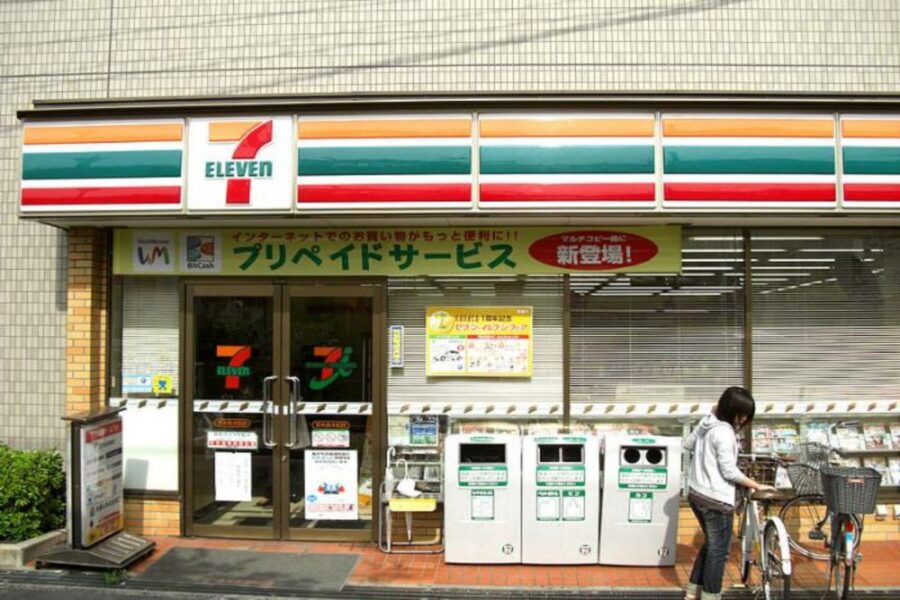
Let’s talk konbini—those ubiquitous 7-Eleven, Lawson, and FamilyMart stores. They’re lifesavers for vegetarians on the go or on a budget. You’ll find inari sushi (sweet tofu-wrapped rice), yaki onigiri (grilled rice balls), and salads. Not every item is vegetarian, so check labels carefully.
Supermarkets are great if you want to cook or assemble your own meals. Stock up on fresh produce, tofu, and carton soups (though watch out—some miso packets contain fish). I’d often pick up fruit and snack throughout the day. Look for the green VegeProject Japan sticker for clearly marked vegetarian products, or just ask staff if you’re stuck.
It’s not a perfect system—sometimes fish stock sneaks in—but if you read labels and don’t mind asking questions, you’ll get by. Honestly, it’s part of the fun.
Essential Tips for Vegetarians Traveling in Japan
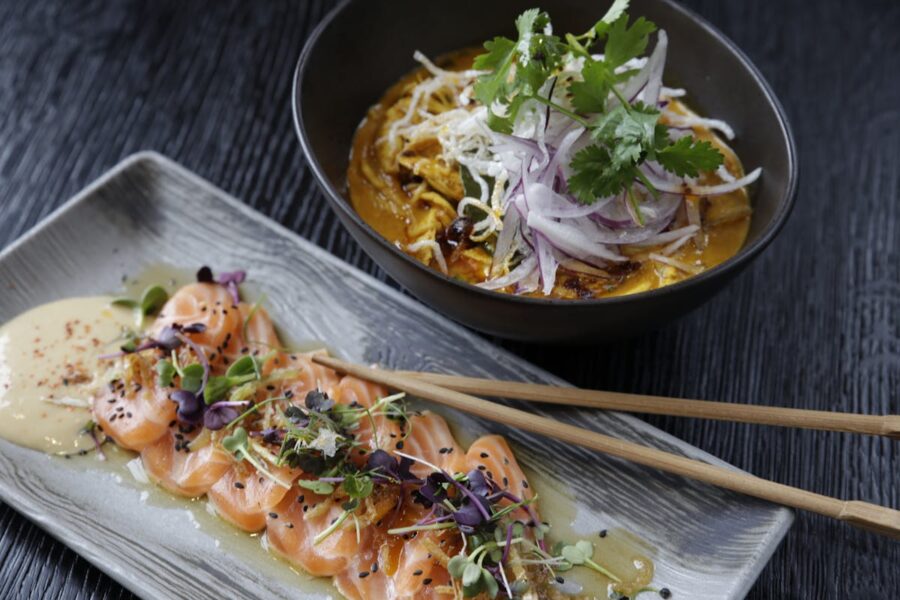
Japan can be tricky for vegetarians, but with a bit of prep, you’ll manage just fine. Make your needs clear and use some handy tools—mealtime can turn into an adventure.
Communicating Dietary Requirements
Let’s be honest—the language barrier can trip you up. Even with English menus, “vegetarian” sometimes just means “no visible meat,” but the fish broth stays. You’ll have to spell things out.
Carry a printed vegetarian card or a screenshot on your phone. Plenty of websites offer cards that explain your needs in Japanese—something like, “I do not eat meat, fish, or seafood.” These cards work wonders, especially in little noodle shops. If you can’t find one, jot down key phrases like “Niku to sakana wa taberaremasen” (I can’t eat meat or fish) and show it with a smile. Seriously, a little bow goes a long way here.
You might have to repeat yourself or point to your card again. Staff sometimes hesitate, but that’s normal—just be patient. Get to know classic veggie dishes like kappa maki, zaru soba (with vegetarian broth), and tsukemono.
Using Technology to Find Options

Let’s be real, you’ll want solid Wi-Fi—grab a pocket wifi so you’re never stuck without Google Translate or restaurant apps. HappyCow is a must. Plug in your location and it’ll pull up vegetarian and vegan spots, even in smaller towns.
Google Maps works too—search “vegetarian” or “plant-based” and read reviews for hidden gems. VegeProject Japan lists vegetarian-friendly restaurants, and sometimes those last-minute finds are the most memorable—tiny tofu cafés, quirky lunch counters, you name it.
Some booking platforms let you filter for vegetarian food tours. If you’re out of ideas, check for vegetarian-friendly attractions and tours to take the stress off. Save your favorites in your map app so you can grab a bite between sightseeing.
Regional Vegetarian Experiences Across Japan
Every Japanese city has its own local specialties, quirks, and the occasional surprise. Tradition and modern twists blend here, so your options can range from Buddhist temple cuisine to inventive city cafés.
Vegetarian Food in Kyoto
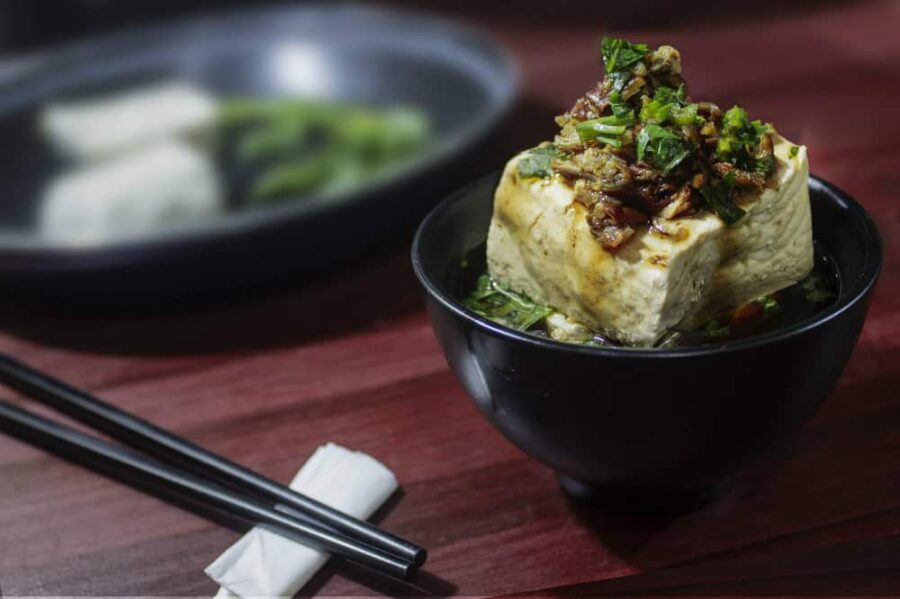
Kyoto is basically paradise for vegetarians who love a bit of history. The city’s Buddhist roots show up in shojin ryori—vegetarian temple cuisine served in peaceful temple restaurants. Try yudofu (tofu hot pot) near Nanzenji or Ryoanji temples; sometimes you’ll spot monks drifting by, which adds to the atmosphere.
If you’re staying in a ryokan (traditional inn), ask about vegetarian meals. Many ryokans whip up seasonal dishes without fish or meat, like pickled mountain veggies, silky tofu, and miso soup loaded with local greens. Around Gion and Pontocho, small restaurants usually have at least one veggie dish or will tweak something if you ask. Google Translate or the phrase “niku-nashi” (“without meat”) helps a lot.
Vegetarian Spots in Tokyo
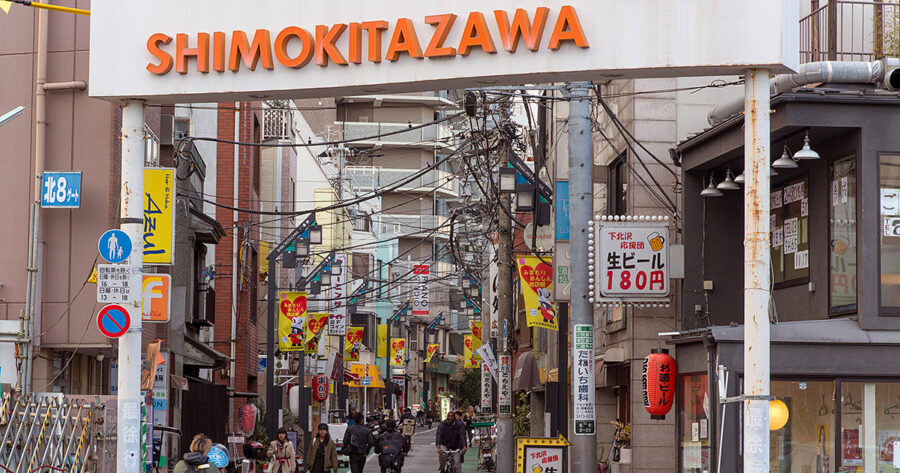
Tokyo’s vegetarian scene is huge—if you know where to look. The city is massive, but it’s also playful and creative with plant-based food. You’ll find tiny specialist restaurants in Shimokitazawa or slick vegan cafés tucked away in Shibuya. If you need something quick, konbini have onigiri (rice balls) with umeboshi or seaweed—I basically survived on these my first week.
Some ramen shops now offer plant-based broths, so you don’t have to skip the classic experience. Look for restaurants with English menus; plenty are happy to swap out bonito-based dashi for kombu seaweed if you ask (and a smile helps).
Top Picks
- T’s TanTan (Tokyo Station): Vegan ramen, loved by locals and travelers
- Ain Soph. Journey (Shinjuku): Creative vegetarian takes on Yoshoku (Western-inspired Japanese dishes)
Osaka’s Vegetarian Scene

Osaka’s street food is legendary. Sure, classic okonomiyaki and takoyaki usually come loaded with seafood or pork, but if you’re determined, you’ll sniff out vegetarian versions. In Dotonbori, a handful of stalls and casual joints actually make veggie okonomiyaki—just be ready to point at the menu and repeat “no meat, no fish” with a smile.
One time, I ordered takoyaki and asked them to skip the octopus. The vendor blinked, laughed, then whipped up a cheesy corn batter instead. Not exactly what I expected, but honestly, it was delicious. If you want something a bit more filling, head to Osaka’s international neighborhoods—Shin-Osaka and Amerikamura have Indian, Middle Eastern, and a few quirky Japanese plant-based cafés tucked away.
Local tip: Folks in Osaka are pretty approachable, so don’t hesitate to ask for a custom veggie dish. Even if you trip over the language, a little patience and pointing usually works wonders.
Popular vegetarian foods in Osaka:
| Dish | Where to Find | Notes |
|---|---|---|
| Veggie Okonomiyaki | Dotonbori, local cafés | Ask for no meat or seafood |
| Vegetarian Curry | Namba, Umeda | Japanese-style or international options |
| Plant-based Bento | Train stations, markets | Good for a quick lunch on the go |
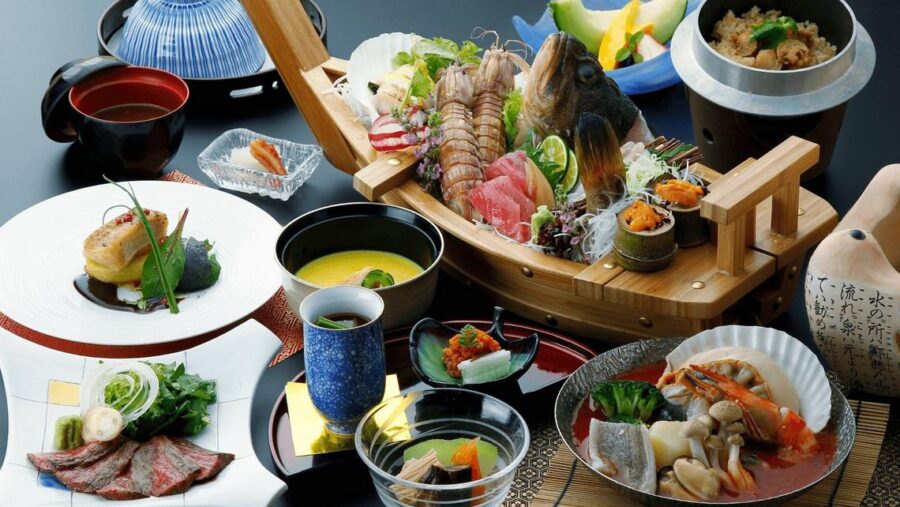
Finding vegetarian food in Japan feels like a treasure hunt sometimes. Dishes that look meat-free often sneak in fish, meat, or dashi, but there are solid veggie options hiding in plain sight.
Identifying Vegetarian Sushi and Rice Dishes

Sushi isn’t just about raw fish. Honestly, some of my favorites are plant-based. Kappa maki (cucumber rolls) and takuan maki (pickled daikon rolls) pop up at nearly every sushi shop. Inari sushi—sweet tofu pockets stuffed with rice—never disappoints.
If you love rice balls, keep an eye out for onigiri. Always check the filling—umeboshi (pickled plum) is a safe, tangy bet, or grab plain seaweed-wrapped rice. Just a heads up: some onigiri hide tuna mayo or bonito, so peek at labels or ask. In supermarkets, 梅 means umeboshi, and 納豆 means natto (fermented soybeans)—a definite acquired taste, but totally vegetarian.
Noodles, Curries, and Soups
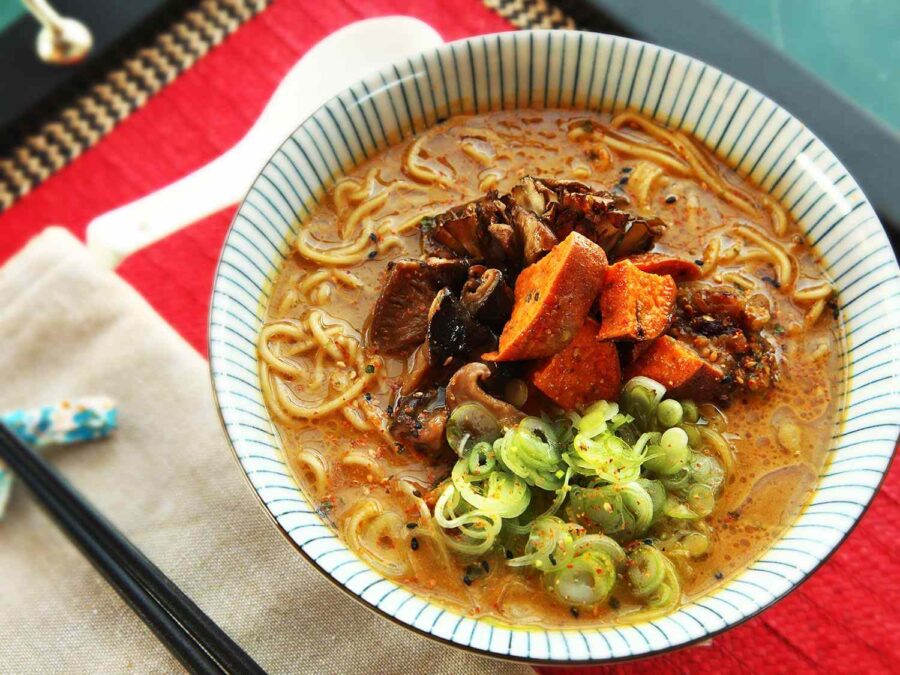
Japan’s noodle game is strong. Soba noodles (buckwheat) come chilled as zaru soba or hot in soup, but the broth usually contains fish-based dashi. I always ask for noodles without broth or hunt for spots with veggie soup bases.
You’ll find vegan ramen and vegetarian ramen more frequently these days, especially in Tokyo and Kyoto. Japanese curries are everywhere, but the classic versions often have meat. Look for “vegetable curry” or “yasai karee” (野菜カレー) signs. I once stumbled into a tiny Sapporo curry shop with a handwritten “vegetarian only” sign—still one of my best finds.
Miso soup sneaks into almost every meal, but it nearly always contains fish stock. If you’re strict, it’s safer to ask, or just skip it.
Snacks, Street Food, and Dessert
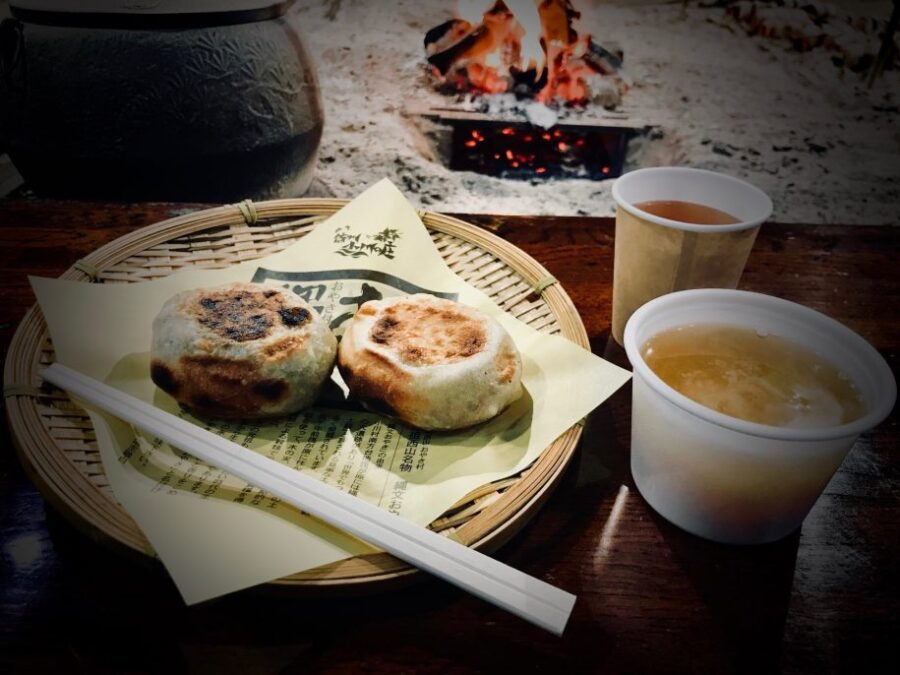
Japanese street snacks can be tricky, but you’ll find some gems. Oyaki—grilled buns packed with veggies or sweet bean paste—make a hearty snack, especially around Nagano. I usually grab them at train stations or during festivals.
Got a sweet tooth? Japan’s got you covered. Mochi rice cakes come in all kinds—simple, stuffed, chewy, and often vegan. Traditional wagashi use rice flour, sugar, and natural flavors like red bean, chestnut, or matcha. Just watch for sneaky gelatins, but most classic wagashi are totally plant-based. I’m a sucker for the squishy, fresh ones from local tea shops—especially early in the day.
For packaged snacks, look for senbei (rice crackers) with plain soy sauce. Avoid anything with “fish sauce,” “bonito,” or “ebi” (shrimp) on the label. The konbini (7-Eleven, Lawson, etc.) aisles are a treasure trove if you’re willing to squint at labels—sometimes you’ll find surprising veggie-friendly snacks and salads.
Local Products and Shopping Advice
Shopping for vegetarian groceries in Japan is a bit of a puzzle at first. There are a few tricks for reading labels, and you’ll discover some unexpected plant-based treats if you know where to look.
Reading Labels and Finding Vegetarian Groceries

Japanese supermarkets and konbini (like 7-Eleven and FamilyMart) can be overwhelming. Labels are mostly in Japanese, and the pictures don’t always help. If you can’t read Japanese, Google Translate’s camera mode is a lifesaver, though it’s not perfect. “Vegetarian” or “plant-based” rarely shows up clearly, so you’re usually scanning for familiar ingredients or avoiding obvious animal products.
Here are some go-to vegetarian basics:
| Product | Notes |
|---|---|
| Tofu | Everywhere—plain, silken, you name it. |
| Tsukemono | Pickled veggies—sometimes the brine hides fish stock. |
| Natto | Fermented soybeans, great with rice if you’re adventurous. |
| Kombu | Edible kelp, perfect for making your own veggie dashi. |
| Seaweed | Nori and wakame—snack on them or toss into soup. |
Watch out for dashi (fish stock) hiding in soups, sauces, and seasoning packets. Even chips and instant noodles can sneak in animal products. I once grabbed what I thought were plain seaweed chips—turns out, “shrimp extract” was buried in the fine print. When in doubt, check out the international aisle in big supermarkets; you might find imported plant-based snacks with English labels.
Plant-Based Cooking Classes and Food Tours
If you’re up for more than just eating out, Japan has some fantastic plant-based cooking classes and food tours. They’re not always in the guidebooks, but they’re popping up more and more—even in smaller towns. Joining a vegetarian cooking class can be a highlight. You’ll get hands-on with local ingredients like tofu and seasonal veggies, and you’ll pick up tricks for using miso and kombu at home.
Food tours are a fun way to find hidden veggie gems, especially if asking for vegetarian options makes you nervous. These tours often introduce you to dishes you’d never order on your own, like plant-based izakaya snacks or creative twists on street food. And honestly, chatting with locals and sharing stories is half the fun.
If you get lost in big markets like I do, a guide’s advice is priceless. They’ll steer you to the best spots for sweets or help you track down vegan versions of classics. I still remember my first veggie food crawl in Kyoto—I walked away with new friends and a mild obsession with yuba (tofu skin) sushi.
Frequently Asked Questions
Hunting down vegetarian food in Japan is a bit of an adventure—sometimes you’ll stumble onto amazing veggie meals in the least likely places, and other times you’ll circle the block searching for that elusive plant-based dish. Japan’s cities have definitely gotten better, especially if you know where and how to look.
What are the best strategies for locating vegetarian restaurants in Japan?
I always start with a food app like HappyCow or Google Maps. They’re not perfect, but I’ve found some real gems this way—even in smaller towns.
If your phone dies (it happens), look for “shojin ryori”—that’s Buddhist temple food, and it’s always vegetarian. Cafes and international spots in big cities usually have something veggie, but you might need to ask for tweaks.
Can you find vegetarian options at convenience stores like 7-Eleven in Japan?
You can, but keep your expectations in check. Onigiri (rice balls) with umeboshi, plain salads, fruit cups, and edamame are safe bets. Just remember: lots of products sneak in fish-based ingredients, even when it’s not obvious.
Reading labels is tricky—most are in Japanese—but you might recognize a few key words. Pro tip: use your phone camera to translate if you’re unsure. I’ve definitely lived on rice balls and snacks when in a pinch.
What are some popular vegetarian dishes in Japanese cuisine?
Vegetable tempura is an easy favorite—honestly, it’s even better in Japan. Tofu dishes like yudofu (hot tofu) show up often, and soba or udon noodles served cold with dipping sauce are usually safe if you check the broth.
Pickled veggies (tsukemono), kappa maki (cucumber sushi), and nasu dengaku (eggplant with miso) are also common. Sometimes you’ll need to get creative and ask for no meat or fish—chefs often enjoy the challenge!
How do you effectively communicate dietary restrictions as a vegetarian in Japan?
Honestly, this is where things get tricky. I always try to learn a few phrases like “Watashi wa bejitarian desu” (I am vegetarian) and “Niku, sakana, dashi wa taberaremasen” (I can’t eat meat, fish, or fish stock). Write them down or keep them on your phone for quick access.
Handing your server a card with your dietary needs in Japanese works wonders. It’s old school, but it’s saved me more than once.
Which cities in Japan are most accommodating to vegetarians?
Tokyo and Osaka are the easiest—so many restaurants, including specialty cafes and international chains, understand vegetarian needs. Kyoto is also fantastic, with lots of temple restaurants and traditional options.
Once you leave the big cities, it’s more of a challenge. You’ll still find some options, but the deeper you go off the tourist trail, the trickier it gets. I always stash a few snacks, just in case.
Are there any specific Indian vegetarian dishes widely available in Japan?
Absolutely, you’ll spot plenty of Indian restaurants in Japan’s bigger cities. They tend to serve up the usual favorites—dal, chana masala, palak paneer, and a range of vegetable curries.
You’ll almost always see naan and rice sets on the menu, which makes ordering a breeze. Once you wander away from touristy areas, though, the Indian food scene changes a bit.
A lot of places tweak their recipes for local tastes, and honestly, you’ll notice it. Sometimes the spices barely register, so if you’re craving that familiar kick, just ask for extra heat.
Don’t hesitate to chat with the staff about what’s authentically spicy or vegetarian—they’re usually happy to help if you’re friendly about it. If you’re adventurous, try spotting Indian-run grocery stores for snacks and ingredients you won’t see in regular Japanese supermarkets.


